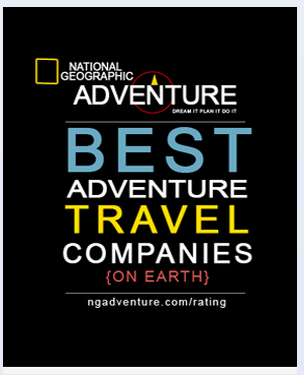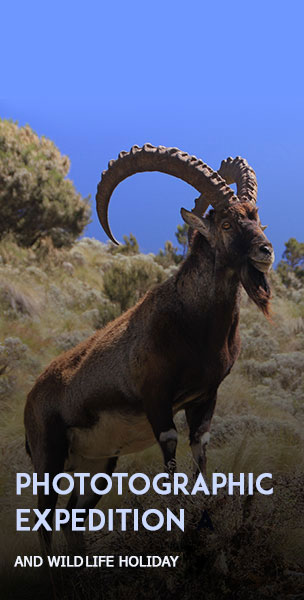Country Topographic Profile
With an area of 1,112,000 square kilometers, Ethiopia is as large as France and Spain combined.
From the north and running down the center are the Abyssinian highlands; to the west of the chain, the land drops to the grasslands of Sudan; to the east, the deserts of the Afar and the Red Sea. South of Addis Ababa, the land is dominated by the Rift Valley Lakes. The main rivers are the Blue Nile, the Tekezze (which joins the Nile in Sudan) the Awash, the Wabe Shebelle, the Omo, the Baro, and the Birbir.
Population
The population is estimated at 100 million, over 50% of whom are under 20 years old. The average number of inhabitants per square kilometer is 99.
Language
Ethiopia is a multi-ethnic state with a 83 languages and 200 dialects spoken in the country. The main three languages are Amharic, Tigrigna, and Oromigna. English is also widely spoken. Amharic is the most prominent of the local languages. The name originates from the Amhara people, who live in the highlands of Ethiopia.
Ethiopian languages belong to one of four main language groups: Semitic (such as Amharic and Tigrigna), Cushitic (such as Afar Oromo), Omotic, and Nilo-Saharan. A useful phrase book will provide phonetic guides to aid pronunciation.
Government
The former military regime was overthrown in 1991. Ethiopia is now a Federal Republic made up of 14 regions, mainly based on ethnicity. (In southern Ethiopia, five regions have combined to form the Southern Region.) The present government was elected in 1995 for a 5-year term.
Economy
About 90% of the population earn their living from the land, mainly as subsistence farmers. Agriculture is the backbone of the national economy, and the principal exports from this sector are coffee, oil seeds, pulses, flowers, vegetables, sugar, and foodstuffs for animals. There is also a thriving livestock sector, exporting cattle on the hoof and hides and skins.
Ethiopia's Resources
Ethiopia is the "water tower" of the region (the Blue Nile contributes to 85% of the main Nile flow) and plans are now in progress to better exploit the country’s water resources both to boost agricultural production and for power generation.
Mineral exploration and mining has stepped up in recent years — there are reserves of natural gas, coal, gold, copper, tantalum, potash, zinc, iron ore, marble, and precious and semi-precious stones.
The export of livestock, skins, and hides (Ethiopia has the largest domestic livestock population in Africa) oilseeds, pulses, and animal feed makes up the rest of Ethiopia’s foreign currency earnings, with tourism set to make an increasingly important contribution.
When to Come to Ethiopia
This depends on where you are going. In most of the country, the main rainy season runs from June to the end of September, with short rains in March.
In the Omo and Mago parks however, in Southern Ethiopia, the seasons are different with the main rains from March to June, and shorter rains in November.
With the upgrading of the airports along the historic route (Axum, Lalibela, Gondar, and Bahir Dar), it is now possible to visit the northern route even in the rainy season. For travellers who do not mind waiting out a downpour (usually followed by brilliant sunshine), there are certain rewards — a green countryside full of crops and flowers, and the sites largely to yourselves.
Time
Ethiopia is in the GMT+3-hours time zone. Ethiopia follows the Julian calendar, which consists of twelve months of 30 days each and a thirteenth month of five or six days.
Visa and Immigration Requirements
Visa applications may be obtained at Ethiopia's diplomatic missions overseas. However, nationals of 33 countries are now allowed to receive their tourist visas on arrival in Ethiopia at the regular charge. The list includes Argentina, Austria, Belgium, Brazil, Canada, China, Denmark, Finland, France, Germany, Greece, Ireland, Israel, Italy, Japan, Republic of Korea, Kuwait, Luxembourg, Mexico, Netherlands, New Zealand, Norway, Poland, Portugal, Russian Federation, South Africa, Spain, Sweden, Switzerland, Taiwan, United Kingdom, and United States.
New: E-Visa for Ethiopia. Check out if you are eligible for the E-Visa at https://www.evisa.gov.et
Climate and Clothing
- Because of the elevation, the temperature rarely exceeds 25 degrees Celsius (77 degrees Fahrenheit) in most of the country. Although in some of the lower-lying areas (Awash, Omo, and Mago parks), it can get considerably hotter.
- Pack light clothes for the daytime, a jacket or sweater for the evenings, and a good pair of walking shoes even if you are not going trekking — paths around historic sites are usually uneven and stoney.
- Trekkers in the Simian and Bale Mountains will need warm clothes, waterproof gear, and 3/4 seasons sleeping bags.
- A cultural note: Ethiopians are generally modest dressers and visitors should be sensitive about going underdressed into places of worship. Shoes must always be removed before entering churches and mosques — airline socks are very useful for sites like Lalibela with its many churches.
Health and Medical
- All visitors should have a valid yellow fever vaccination certificate if coming from an infected area. Immunizations for Hepatitis A and B, Typhoid, and Polio are recommended. Malaria: In many sites, including Axum, Gondar, and Lalibela, malaria is not a problem because of the elevation. But it can occur in Bahir Dar at the end of the rainy season and after unseasonable rains. Chloroquine-resistant strains have been identified in some areas, so you should consult your doctor about the prescription.
- Alternatively, you can keep mosquitoes and other insects at bay with repellent creams and sprays. Climatic changes and phenomena such as el Nino has meant the appearance of Malaria at unseasonable times. And it has spread to areas that were previously malaria free.
- Visitors should take a simple first aid pack, which would include different-size plasters, antiseptic cream, anti-histamine cream and/or tablets for insect bites, sun barrier cream (while temperatures are moderate, the sun is strong) and anti-diarrhoea tablets such as Imodium for emergencies (they will not cure the problem, but will control the symptoms). Generally, visitors should take out standard holiday health insurance in their home countries.
Food and Drink
With people from so many different ethnic groups, the food and drinks of Ethiopia are varied. A typical dish is wot, a hot spicy stew of meat or vegetables, seasoned with a blend of Berbere. It is often made with doro (chicken), and normally served with injera, the traditional spongy pancake made from a fermented teff flour batter. In most good restaurants, or in the local coffee house, you will find delicious dishes that reflect the customs and ingredients of the region. In Addis Ababa, as in most of the larger cities, visitors will also find a wide range of restaurants that reflect the influences of other cuisines. All large hotels have international restaurants, but elsewhere in the city you can sample Chinese, Indian, Middle Eastern, Italian, French, Greek, and other cuisines. Ethiopia produces its own wines. Dukam and Gouder are fine reds, Axumite is sweeter, and Crystals is a dry white wine. For a few years, the french company Castel has been producing excellent wines in the Ziway region. Ethiopia´s famous honey wine, or Tej, is found all over the country as is Tela, a local beer and Katikala, a distilled liquor. Excellent beers are brewed in the country (Heineken, St. George, Dashen, Habesha, and many more)
Accommodation
- Addis Ababa has hotels that cater for all budgets, from the luxurious Sheraton, Hilton, and Intercontinental hotels to a growing number of 4-star and tourist-standard hotels.
- Standards for lodges and hotels vary outside the capital, and there are very good standard lodges and hotels in all parts of the country. There are also a number of recently built ecolodges.
Transport
Roads: Traveling by road allows visitors to experience Ethiopia’s wonderful scenery. The total road network has grown by some 20,262 km to 46,812 km, of which 54% is now in a good and serviceable condition.
Railway: There is a plan to construct a new railroad that connects Ethiopia to the Red Sea port of Djibouti.
Air: Ethiopian Airlines has an extensive domestic network flying to 43 airfields and an additional 21 landing strips. There are also many international airlines flying to and from Addis Ababa for the international flights.
Money Matters
Currency Converter for all Currencies
The local currency is the Ethiopian birr, made up of 100 cents. Visitors may import an unlimited amount of foreign currency, providing declaration of such currency (on the appropriate blue-coloured form) is made to customs upon arrival. Foreign currency may only be changed at authorized banks and hotels. The currency declaration form must be attained, as this will be required by customs on departure. Visitors, however, will be able to change back any excess Ethiopian birr to foreign currency at the airport before departure. If you do have Ethiopian birr to cash at the airport, you must bring with you, in addition to the currency declaration form, all the receipts for exchange transactions. Credit cards are accepted in bigger hotels. On a tour in the countryside cash is the best option. There are ATMs in every tourist destination (for visa and mastercard)
Duty-free Imports
Permitted for up to:
- 400 cigarettes or 250 g of tobacco
- 2 litres of alcoholic beverages
- 600 ml of perfumes
Visitors may export souvenirs with a value not exceeding 500 birr, although some articles (such as animal skins and antiques) require an export permit.
Electricity
220 volts
Souvenirs
Many antiques cannot be exported and may be confiscated if found in airport searches. The National Museum in Addis Ababa can issue a clearance certificate.
Photography
As a matter of courtesy, permission should be sought before photographing individuals. In many parts of the country, particularly among the Afar and among the ethnic groups living by the Omo River, people will demand a fee.
In some sites (Blue Nile Falls for example) there is a charge for video photography.




